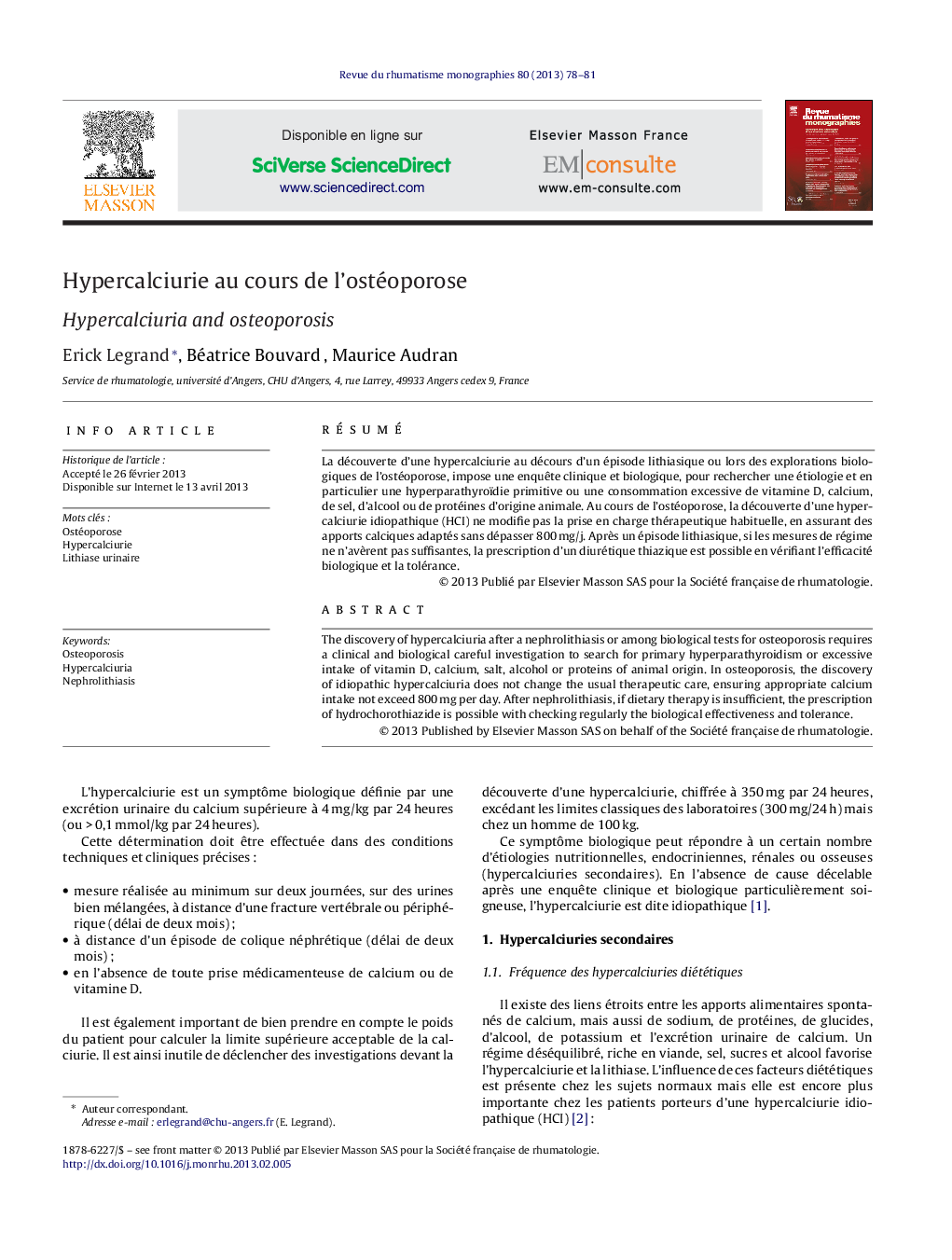| Article ID | Journal | Published Year | Pages | File Type |
|---|---|---|---|---|
| 3389926 | Revue du Rhumatisme Monographies | 2013 | 4 Pages |
RésuméLa découverte d’une hypercalciurie au décours d’un épisode lithiasique ou lors des explorations biologiques de l’ostéoporose, impose une enquête clinique et biologique, pour rechercher une étiologie et en particulier une hyperparathyroïdie primitive ou une consommation excessive de vitamine D, calcium, de sel, d’alcool ou de protéines d’origine animale. Au cours de l’ostéoporose, la découverte d’une hypercalciurie idiopathique (HCI) ne modifie pas la prise en charge thérapeutique habituelle, en assurant des apports calciques adaptés sans dépasser 800 mg/j. Après un épisode lithiasique, si les mesures de régime ne n’avèrent pas suffisantes, la prescription d’un diurétique thiazique est possible en vérifiant l’efficacité biologique et la tolérance.
The discovery of hypercalciuria after a nephrolithiasis or among biological tests for osteoporosis requires a clinical and biological careful investigation to search for primary hyperparathyroidism or excessive intake of vitamin D, calcium, salt, alcohol or proteins of animal origin. In osteoporosis, the discovery of idiopathic hypercalciuria does not change the usual therapeutic care, ensuring appropriate calcium intake not exceed 800 mg per day. After nephrolithiasis, if dietary therapy is insufficient, the prescription of hydrochorothiazide is possible with checking regularly the biological effectiveness and tolerance.
